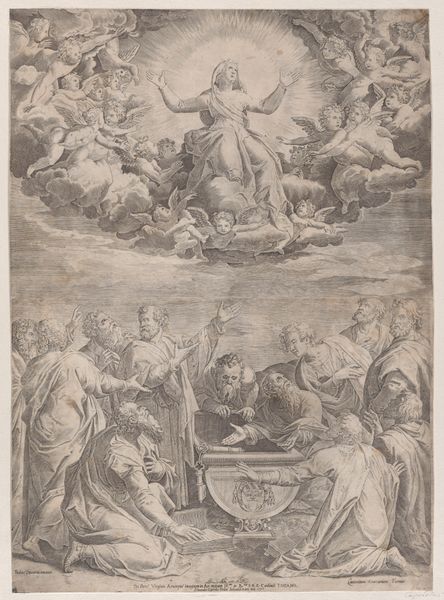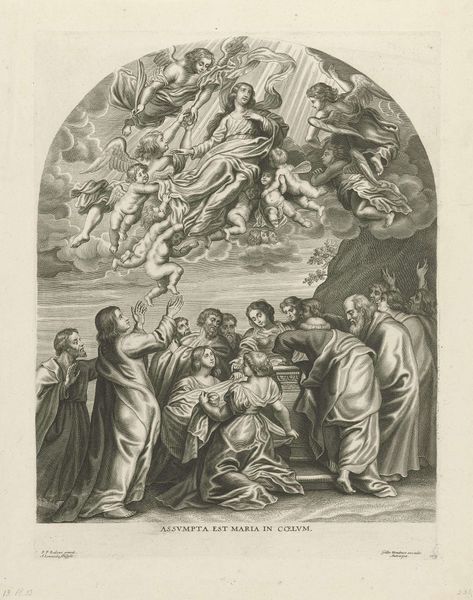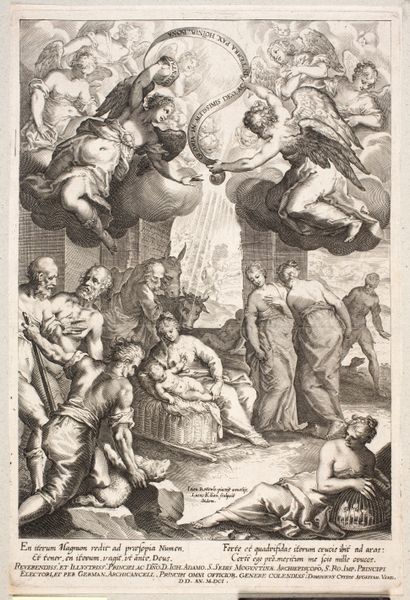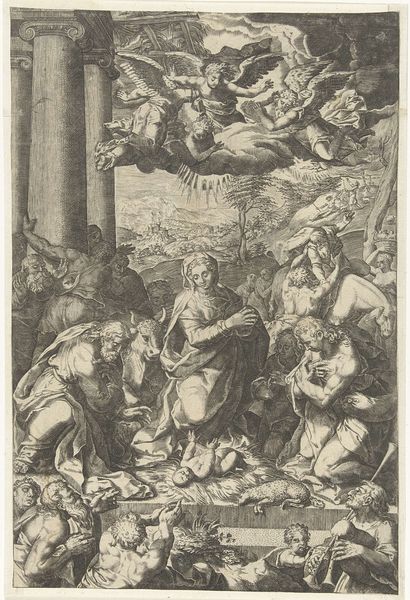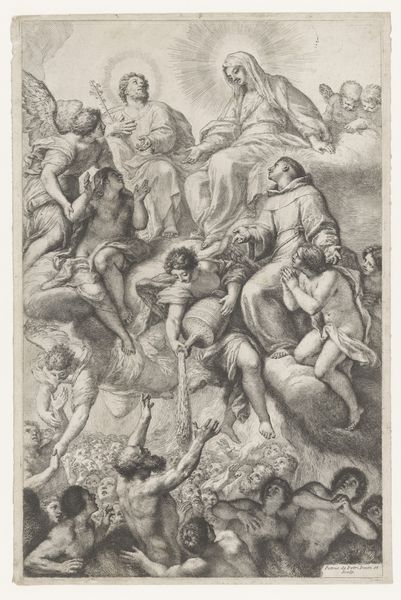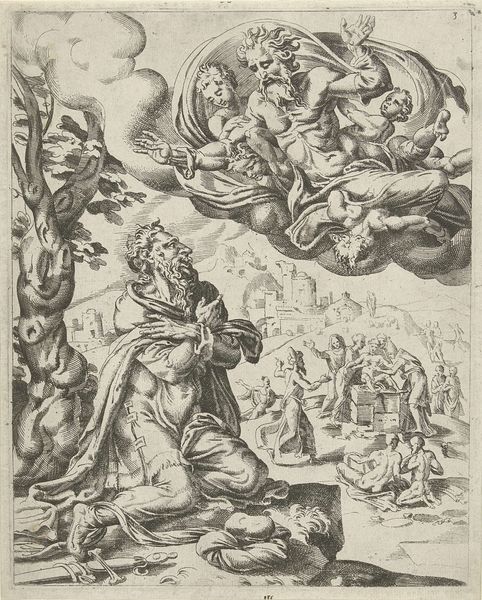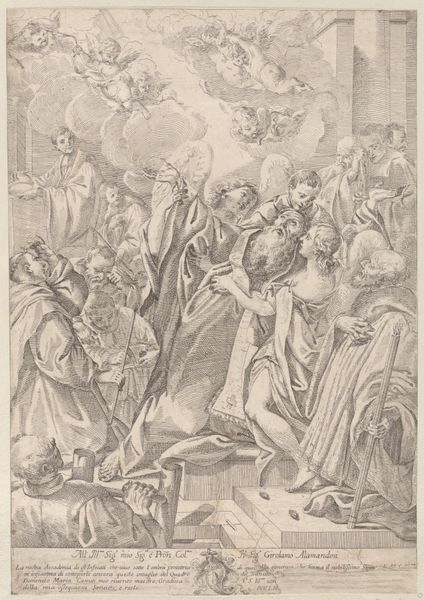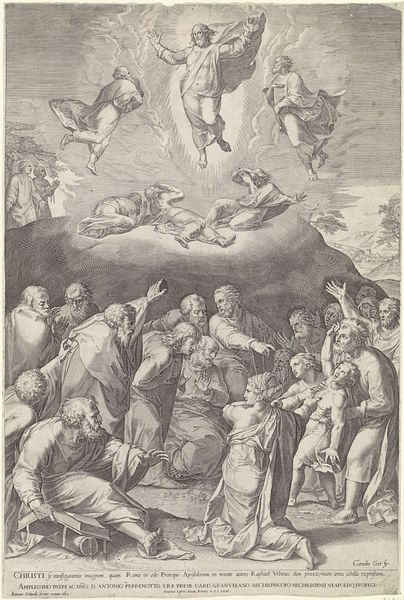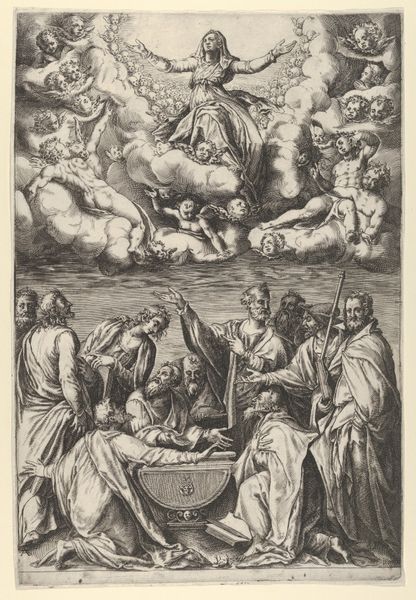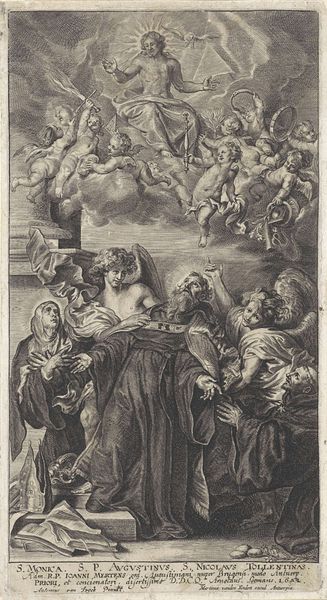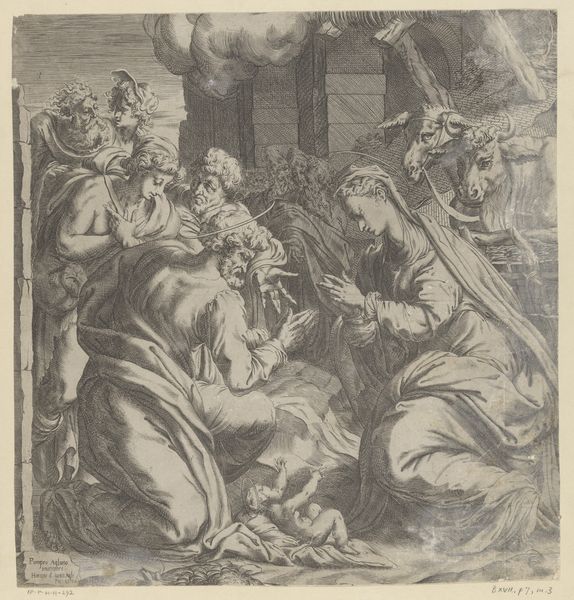
The Assumption of the Virgin, who rises from the tomb surrounded by Apostles 1778
0:00
0:00
Dimensions: Sheet (Trimmed): 20 1/16 × 12 1/2 in. (51 × 31.7 cm)
Copyright: Public Domain
Editor: Here we have Giovanni Battista Cecchi's "The Assumption of the Virgin, who rises from the tomb surrounded by Apostles," an engraving from 1778. The sheer number of figures in the composition is striking, really filling the entire picture plane. How do you interpret this work? Curator: I see this engraving as deeply embedded in the power structures of its time, the late 18th century, especially the dynamics between religious doctrine and artistic representation. How does Cecchi visually reinforce or perhaps subtly question the established social order through the depiction of the Virgin’s ascent? Think about how the figures—particularly the apostles—are positioned in relation to the ascending Virgin. Editor: They all look upward, in awe and reverence. Is that simply to show respect? Curator: Certainly, but consider the gaze as an instrument of power. Who is allowed to look, and who is being looked *at*? Notice the Virgin’s own gaze—does it meet ours, or is it directed elsewhere? And what does that tell us about the artist's positioning within the established hierarchy of the time? This was also during the Enlightenment. Editor: So perhaps Cecchi is walking a fine line? A religious commission with an undercurrent of something more…political, even? Curator: Precisely! It makes you think about the role of art during periods of significant social change, and how artists navigated those tricky waters. Editor: I never considered how loaded a simple gaze could be. I'll definitely be more aware of these things going forward. Curator: Indeed! There's a constant conversation occurring.
Comments
No comments
Be the first to comment and join the conversation on the ultimate creative platform.

